The use of simulation models is a necessity and also an aid in the decision-making process in sustainable agricultural systems. Organizing the experimental knowledge of crop production systems without the book keeping and deductive methods of mathematics is very difficult. This book aims to guide readers in the process by which the properties of the systems can be grasped in the framework of mathematical structure with minimal mathematical prerequisites. The objective of this book is to help the undergraduate, graduate and post-graduate students in the disciplines of agronomy, plant breeding, agricultural meteorology, crop physiology, agricultural economics, entomology, plant pathology, soil science and ecology (environmental science). This book may also be useful for administrators in various agricultural universities in order to direct research, extension and teaching activities. Planners at national and state levels may also benefit from this book
Modeling Crop Production Systems: Principles and Application 1st Edition by P Singh (Author)
KSh 5,800.00
The use of simulation models is a necessity and also an aid in the decision-making process in sustainable agricultural systems. Organizing the experimental knowledge of crop production systems without the book keeping and deductive methods of mathematics is very difficult. This book aims to guide readers in the process by which the properties of the systems can be grasped in the framework of mathematical structure with minimal mathematical prerequisites. The objective of this book is to help the undergraduate, graduate and post-graduate students in the disciplines of agronomy, plant breeding, agricultural meteorology, crop physiology, agricultural economics, entomology, plant pathology, soil science and ecology (environmental science). This book may also be useful for administrators in various agricultural universities in order to direct research, extension and teaching activities. Planners at national and state levels may also benefit from this book
2 in stock
| Categories: | Agriculture, Science & Mathematics |
|---|
Related products
-
Handbook of Vegetable Science and Technology
KSh 10,200.00“Furnishes exhaustive, single-source coverage of the production and postharvest technology of more than 70 major and minor vegetables grown in tropical, subtropical, and temperate regions throughout the world. Provides comparative data for each vegetable presented. “
-
The Science of Agriculture: A Biological Approa
KSh 27,580.00THE SCIENCE OF AGRICULTURE: A BIOLOGICAL APPROACH, Fifth Edition, masterfully introduces the biological sciences and explores the influences of these sciences on modern agricultural practices and the agricultural industry. Reader-friendly and superbly illustrated, this highly practical text explains not only the �how� of agriculture, but also the �why� behind agriscience, presenting information on plant and animal systems, soils, cell functions, genetics, genetic engineering, plant and animal reproduction, entomology, biotechnology, and environmental concerns. Additionally, the text spotlights career opportunities and discusses new directions in agriculture, including topics such as no-till crops, high-pressure processing in food preservation, fracking, and more, to further engage you with today�s agricultural world.
-
Agricultural Law and Economics in Sub-Saharan Africa: Cases and Comments
KSh 17,400.00Agricultural Law in Sub-Saharan Africa: Cases and Comments introduces the subject of agricultural law and economics to researchers, practitioners, and students in common law countries in Sub-Saharan Africa, and presents information from the legal system in Botswana, Gambia, Ghana, Lesotho, Malawi, Nigeria, Sierra Leone, South Africa, Swaziland, Tanzania, Zambia, and Zimbabwe. The law and economics approach entails the use of quantitative methods in research. This is consistent with the expectations in an applied economics field such as agricultural economics.
Covering the general traditional law topics in contracts, torts, and property, the book goes further to introduce cutting-edge and region-relevant topics, including contracts with illiterate parties, contract farming, climate change, and transboundary water issues. The book is supported by an extensive list of reference materials, as well as study and enrichment exercises, to deepen readers’ understanding of the principles discussed in the book. It is a learning tool, first and foremost, and can be used as a stand-alone resource to teach the subject matter of agricultural law and economics to professionals new to the subject area as well as to students in law school, agricultural economics, economics, and inter-disciplinary classes.
- Offers research findings on such topics as food safety, climate change, transboundary natural resources, international sale of goods, patents, and trademarks to highlight the future sources of pressure on the agriculture industry
- Uses case-studies to provide real-world insights into the challenges and considerations of appropriate agricultural law development
- Challenges readers to carry out their own research in their areas of study, and to gain some understanding of the relationship between law, economics, and statistics
- Includes extensive resources, such as chapter summaries, study questions, and challenge questions at the end of each chapter to assist instructors and students in gaining full benefits from using the book
- Provides separate instructor and student study guides, a test bank, and test bank answers, in hardcopy and electronic formats
-
Linear Algebra
Linear algebra
The development of the internationally standardized language ALGOL has made it possible to prepare procedures which can be used without modification whenever a computer with an ALGOL translator is available. Volume Ia in this series gave details of the restricted version of ALGOL which is to be employed throughout the Handbook, and volume Ib described its implementation on a computer. Each of the subsequent volumes will be devoted to a presentation of the basic algorithms in some specific areas of numerical analysis. This is the first such volume and it was feIt that the topic Linear Algebra was a natural choice, since the relevant algorithms are perhaps the most widely used in numerical analysis and have the advantage of forming a weil defined dass. The algorithms described here fall into two main categories, associated with the solution of linear systems and the algebraic eigenvalue problem respectively and each set is preceded by an introductory chapter giving a comparative assessment. -
The Philosophy of Mathematics Education
KSh 21,115.00Although many agree that all teaching rests on a theory of knowledge, there has been no in-depth exploration of the implications of the philosophy of mathematics for education. This is Paul Ernest’s aim. Building on the work of Lakatos and Wittgenstein it challenges the prevalent notion that mathematical knowledge is certain, absolute and neutral, and offers instead an account of mathematics as a social construction. This has profound educational implications for social issues, including gender, race and multiculturalism; for pedagogy, including investigations and problem solving; and challenges hierarchical views of mathematics, learning and ability. Beyond this, the book offers a well-grounded model of five educational ideologies, each with its own epistemology, values, aims and social group of adherents. An analysis of the impact of these groups on the National Curriculum results in a powerful critique, revealing the questionable assumptions, values and interests upon which it rests. The book finishes on an optimistic note, arguing that pedagogy, left unspecified by the National Curriculum, is the way to achieve the radical aims of educating confident problem posers and solvers who are able to critically evaluate the social uses of mathematics.
-
Calculus: A New Horizon
KSh 3,500.00calculus is aimed at future engineers and professional scientists. Applications modules at the ends of chapters demonstrate the need to relate theoretical mathematical concepts to real world examples. These modules examine problem-solving as it occurs in industry or research settings, such as the use of wavelets in music and voice synthesis and in FBI fingerprint analysis and storage.
-
Tropical Roots and Tuber Crops: Cassava, Sweet Potato, Yams and Aroids (Crop Production Science in Horticulture)
KSh 8,260.00Root and tuber crops are important to agriculture, food security and income for 2.2 billion people in developing countries. These species produce large quantities of dietary energy and have stable yields under difficult environmental conditions. This second edition of Tropical Root and Tuber Crops is an authoritative treatment of four important root and tuber crops: cassava, sweet potato, yams, and aroids.
The same format is followed for each crop: Origin and History, Taxonomy and Botany, Breeding and Genetics, Developmental Physiology, Agronomy, Pests and Diseases, Post-Harvest Quality and Marketing. This new edition reviews the scientific literature produced during the last decade and presents major technical advancements. Modern molecular tools have been used to clarify the phylogeny, taxonomy and origin of these species. Similar advances have been made in physiology, agronomy, pathology and product chemistry. It is essential reading for students, researchers and horticulturists.
-
Agricultural and Agribusiness Law An Introduction for Non-Lawyers
KSh 8,330.00This introductory textbook provides an overview of the concepts necessary for an understanding of agricultural and agribusiness law. The text will help students of land-based industries with little or no legal background to appreciate and identify issues that may require referral or consultation with legal counsel. This new edition is fully revised and updated, particularly addressing developments in taxation and trade, and includes a new chapter on criminal law, an area of increasing relevance to agriculture.
Each concise chapter addresses a different legal issue that those employed in agriculture and agribusiness may face, and both federal law and representative examples of state law are included. In addition to traditional topics such as contracts, property law, and estate planning, the book also covers more contemporary issues such as organic certification, animal law, genetically engineered crops, and food safety.
Agricultural law extends beyond those directly engaged in farming to those in agribusiness who provide services and inputs to farmers, buy farmers’ products, store or transport products, manufacture food products and serve as intermediaries between farmers and consumers. The book will, therefore, also serve as a reference and a guide for those employed in agribusiness and agriculture.

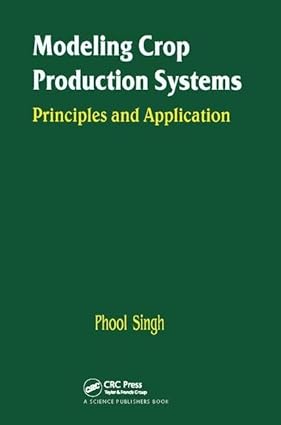
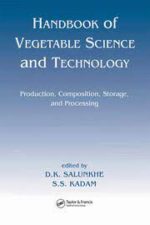
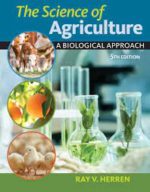
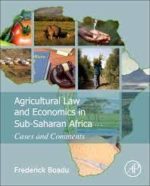




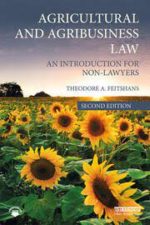
Be the first to review “Modeling Crop Production Systems: Principles and Application 1st Edition by P Singh (Author)”